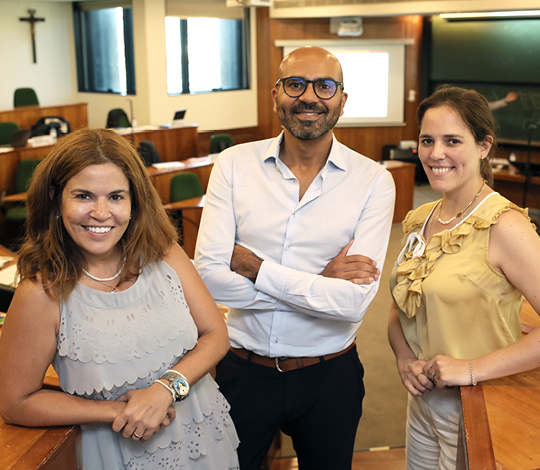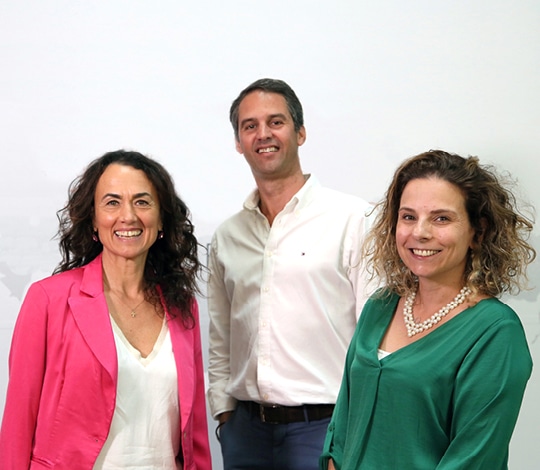Suddenly, all healthcare systems were surprised by a viral disease named COVID19. In all countries, worse or better all governments and health systems had to rapidly focus on saving the lives of the infected ones and screen and diagnose many suspected patients. As fast as possible, hospitals tried to improve their intensive care response, make beds available for COVID19 patients, and stop non-urgent activity to decrease COVID19 patient exposure and also free resources.
A big opportunity for healthcare -based on Portuguese healthcare experience
Collaboration and Patient Centricity
United around COVID19 management, government, healthcare administrators, healthcare professionals, professional associations, patients, pharmaceutical companies, and all sorts of businesses contributed to the combat of the pandemic, but also to suppress other patient needs. What all these stakeholders did and are doing together is overtaking barriers to patient-centered healthcare innovation. The pandemic had the advantage of focusing all stakeholders in increasing value to the patient through the unique way that value can be generated – collaboration and patient centricity. All of the following cases are revenant to increase value for the patients and value for the overall system even after the COVID19 pandemic.
Medications delivered at patients home
Community pharmacies around the country in a more or less organized way started to deliver medicines at home. Additionally, patients started to use e-mails, websites, apps to order medications. All these initiatives were set up to decrease patient exposure to COVID19, but can also in the future be in place to increase efficiency for pharmacies as well as for patients. In some cases, those initiatives were already in place at least as pilots.
Hospital pharmacies also started to deliver medications directly to patients home or through the community pharmacies. There is a need for a pharmacist to evaluate if the patients reveal any change in his/her disease condition, adverse events, or drug-drug interactions. Also, a pharmacist helpline guarantees the coordination between hospital and community pharmacies. Apart from decreasing patient exposure to hospital infections, there is also the advantage to the patient not having to go to the hospital, sometimes once a month to collect the medication.
In both cases, there is the need to guarantee patient support in case of any doubt regarding medication use and the need to report adverse events. Pharmacist video calls, phone calls, or periodic direct interaction at the pharmacy need to be possible.
Home hospitalization
Portugal had already started the movement for home hospitalization as a strategy to decrease the duration of patient stays at the hospital. This practice was being considered relevant to turn in-hospital beds more efficient and at the same time decrease the risk of hospital infections as well as increase patient comfort. Specific teams were formed and trained to care for patients at home, monitoring devices were put in place and frequent phone and video calls allow patients to stay at the comfort of their homes, improving recovery and decreasing exposure to hospital infections. The movement continued throughout the COVID19 pandemic and it was even used for recovery of a large percentage of COVID19 patients themselves. It was very relevant to decrease the risk of in-hospital transmission, and have beds free for the most serious patients.
Adoption of Telemedicine
Public and private hospitals were already doing remote consultations, and this practice was even regulated in terms of the hospital payment system by the National Health System. Nevertheless, the avoidance of patient to go to the hospital, motivated many public and private hospitals to improve and develop telemedicine services during COVID19 pandemic. Private health insurance, which was already setting up telemedicine services, advertised them more energetically. Again, if it is not desirable in some situations, it can be very useful for initial triage and follow-up in many cases, even after the COVID19 pandemic.
Patient remote triage
SNS24 phone line was already used by an increasing number of patients before the pandemic. It was avoiding emergency department use in some cases and, when it was needed, it made it more efficient for patients that can skip triage at the hospital and more efficient for the hospital because it guarantees an increased match between hospital supply and demand. During the pandemic, SNS24 was elected by the government as the priority channel to contact the health system. SNS24 operators used algorithms to decide if a patient was or not suspected of COVID19 and decided if the patient should be referred to a test center. Despite some initial overload, an entire population was aware of the phone line and was somehow directed to use it in the first place.
Stakeholders collaboration
COVID19 pandemic turns the attention of everyone into the national health system. Under the threat of failure, especially at the level of intensive care units, everybody realized the importance of having an efficient and high-quality health system as well as the dedication and effort of healthcare professionals. As such, everybody united in spirit and actions trying to contribute with money, protection material, etc. Additionally, many stakeholders found a way to collaborate. In some cases, it has to be said that, it was the national health system that opened the door to collaborate. All these moves were very important in the combat to the pandemic. It is important for the future, even without pandemic that the National Health System maintains the modesty to allow the stakeholders to collaborate. Due to a lack of trust, collaboration with pharmaceutical companies and other providers was very difficult to be established. Maybe this experience will allow the National Health Service and the other stakeholders to establish trust and replicate and generalize for the future the exercise of increasing value to the patients.
What´s next?
The pandemic is allowing the acceleration of many trends that were already being established in the society and the health system in particular. In other cases, it re-tuned everybody with what is critical for success. One example is the need for collaboration and, the other can be the need to organize healthcare based on patient needs instead of established supply.
Re-organize hospital services in integrated care units
COVID19 required the hospital to re-organize their operations to increase the supply of care and provide the best care for the patient. Due to the threat of transmission, the movements of the patients throughout the hospital were minimized, different doctors were involved in the treatment of the patient and patient information shared efficiently. Now, that they are planning the return to the new normal, it is the opportunity to re-organize not returning to the previous set-up but in a way that improves value for patients – the same reason that led them to rapidly adapt to the pandemic.
Some of the work could be done centrally at the Health Administration Level, namely the analysis of healthcare demand at the national level. This will allow the establishment of guidelines of supply for primary care, hospital care, home hospitalization, reference centers, etc. In case the Health Administration prefers to not define guidelines but, instead allows the different providers to re-organize and make pilots and experiences, there is still room for big progress.
The first step is always an analysis of demand, i.e., the number and type of patients with certain conditions that need care provided by a certain healthcare institution.
The second step is to map the patient care value chain for each medical condition which has the following four main steps: prevention, diagnosis, treatment, and rehabilitation. The patient care value chain designed along those four steps has at least three main components: (1) information needed by the patients, (2) access to the health system (the type of healthcare professional and healthcare provider, as well as frequency and timing of care provision) and (3) interventions needed (diagnostic tests, medications, and other treatments).
The third step is to re-organize the healthcare institution by the medical condition and the respective care delivery value chain as far as possible. The idea is that each patient that needs to go the hospital has healthcare provision mostly organized according to his/her needs instead of what we have today in most of the cases: based in departments and organizational rules requiring the patient to go around the hospital looking for different services, that in some cases do not even communicate among themselves regarding the same patient.
Accelerate telemedicine and patient remote monitoring
As part of the re-organization, hospitals must continue the wave of home hospitalization and telemedicine that most of them were following in the pre-pandemic era and accelerated due to the pandemic constrains.
Based on the care delivery value chain referred above and according to quality guidelines, hospitals need to select which patients and in which steps of the value chain patients need to go to the hospital, can have remote consultations, need to stay in the hospital or can stay at home or a rehabilitation outpatient unit. For that movement, it will be certainly important to accelerate telemedicine and patient remote monitoring projects. Academia, as well as technology partners, will be certainly available, as some of them were during the pandemic. The same can happen with other stakeholders that are increasingly more focused on value-based healthcare. One important step further can also be a review of the legal terms of partnerships between private companies and the National Health Service to allow more agile collaborations.
Upgrade Primary care units
Primary care Units were already giving some steps to provide care according to the specific needs of each patient group. Nevertheless, there is a need for a more integrated approach with other healthcare levels.
First, the population needs to be informed and motivated to consider primary care doctors as the first gate to the national health service.
Second, primary care needs to be organized to provide care according to patient groups: young families without social needs, families at risk due to social or economic difficulties, pregnant women, diabetic patients, etc. Those groups can be selected based on populational data: age, socio-economic status, disease prevalence, etc.
Third, value care delivery chains for those specific population groups need to be designed and established as well as integrated with hospital-based care delivery chains. Maybe primary care will need in some cases care navigators to ensure a smooth patient transition throughout the system.
Four, the population needs to be informed and educated about the group where each individual is included, and his/her care pathway.
Another aspect that needs acceleration within primary care is telemedicine, namely as an alternative for follow-up of individuals along the care pathway.
· It can be relevant for active and healthy individuals as a strategy for disease prevention and risk factors control.
· Under some circumstances of limited mobility, elderly people with relatively stable conditions can also consider this relevant.
· Additionally it needs to be even more established as an alternative for hospital appointments. For that to be fully explored, maybe primary care physicians need further education to better articulate physical examination remotely with specialist doctors.
Explore patient services and home care market
There are already some private companies providing services for home assistance, as well as remote monitoring. If duly articulated with healthcare systems, this is a market that can be even more explored. In some cases, the national health system could even establish partnerships to expand their home hospitalization services, solve some challenges regarding patients that do not have caregivers available, etc.
Measure outcomes, measure costs, measure value
Again, the COVID19 pandemic highlighted the relevance of patient medical records and outcomes measuring at an individual patient level but also, from a population management perspective. Outcome measures were even publicly disclosed daily: number of infected persons, number of hospital inpatients, number of inpatients at intensive care units, number of recovered patients, and mortality. The numbers were disclosed by region and in some cases by a municipality. Data discrepancies were in some cases detected and publicly admitted and, at the same time, data protection discussions were started regarding patient infection or immunization status.
As is the case for other topics, also here the COVID19 pandemic accelerated the way forward in terms of outcomes measurement, discussion, and information to the patient and the population.
If the challenge to outcomes measurement is big, the opportunity is even greater, extending this practice to all main medical conditions according to the main steps of each care delivery value chain. The same with costs and then with value measurement.
Conclusion
Moved by the pandemic experience of strong collaboration among internal and external stakeholders, it is the right time to accelerate the improvement of value creation for patients and the systems overall. This means improving quality and outcomes at an affordable cost for society.
Artigo publicado no linkedin


















